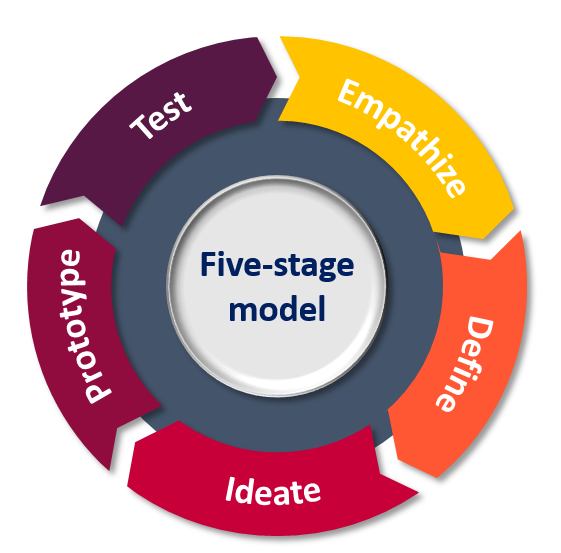In today’s world, banks are continuously competing with startups and Fintech disruptors. The rapid growth of Fintech start-ups and new incumbent financial institutions poses a threat to the traditional banking operation model. To keep up with the demands of the digital age, banking requires a new way of thinking to address customer needs and challenges.
Although the banking industry is not new to customer-centricity, there lies a difference of how the sector approaches its solutions. Compared to the customer-first designs of Fintech, traditional banking design of products begins tech adoption with an inside-out approach of resolving internal operational efficiencies and then extending the same to the customer.
The banking industry is moving toward open banking wherein, application programming interfaces (APIs) are used to share consumer financial data to third-parties. At its core, APIs are fundamental to the concept of open banking. As user-interfaces are important to consumers, the design of APIs greatly impact how developers interact with it. A well-designed API would assist developers to work efficiently, provide a quick turnaround to develop solutions, and foster innovative product develop for consumers and fellow developers.
Design thinking is a customer-centric approach to the identification, design, development, and evolution of products and solutions. Earlier business challenges where approached in a linear fashion, you analyze a situation and decide. The non-linear approach of design thinking involves a defined process and iterative understanding of customer needs. Teams now iteratively design, ideate, prototype, evaluate, and decide. The discovery process is deeply integrated with the organization’s innovation process and continuous feedback from the customers.

Typically, design thinking follows four or five-stages depending on which school of thought one follows. The IDEO process uses a four-phase model of question, care, connect, and commit. Whereas, the Hasso-Plattner Institute of Design at Stanford (d.school) proposes a five-stage model: Empathize, Define, Ideate, Prototype, and Test.
Empathize
As banks start to develop a deep understanding of customers’ needs new paths to innovative services, empathy plays a key role. In this stage, organizations identify and engage with their customer segments to understand their pain points, motivations, and needs. Conducting research based on user personas would also help in better connecting with the customer. For example, banks can look at assessing how their customers prefer to communicate
Define
Insights from the empathize stage provide clear and focused problem statements that need to be addressed. Upon analyzing the information, organizations can define the core problems faced by the customers. Based on user feedback, financial institutions can highlight areas of improvement and define clear goals for their teams. Instead of asking “We need to increase customer-chatbot interactions?”, banks can define the problem such as “Our chatbots technology should factor in elements of semantic-oriented systems”.
Ideate
A definitive problem statement gets the ball rolling towards ideation phase. At this stage, teams brainstorm on ideas geared toward human-centric solutions. New solutions are discussed, and the problem is assessed from all angles. A wealth of ideas can be amassed during the ideation phase from which a few can be prototyped and tested.
Prototype
Design teams can now work on developing an inexpensive minimally viable product (MVP) based on the solutions suggested in the previous stage. In this experimental phase, the prototype can be tested across teams, departments and external validators to identify the best possible solution. The prototype stage gives a hands-on experience for teams to interact with the end product, identifying issues and going back to the drawing board to investigate further.
Test
In the testing stage, organizations introduce their solutions to end-users. The iterative process involves the customers at an earlier stage of product development, working closely with the design team. Based on the results of this stage, banks can now evaluate or redefine problems to further enhance the product for the customer.
The five-stages of design thinking serve more as a guideline for organizations to adopt the concept. Banks have started to recognize design thinking as a core tool for innovation. Leading banks are hiring design teams to transform their workforce, products, and services. For example, Spanish banking giant BBVA has over 1000 staff ambassadors to promote design thinking practices across its organization. Whereas, banks such as USAA have invested in setting up 120-person design studios to develop its design community.
Design thinking is not just a company policy; it is a cultural mindset. Design thinking facilitates rapid innovation through a fine balance of structure and creativity for problem-solving. For successful payoff, the concept of design thinking needs to inculcate across the organization. For example, Citi is working with design consult IDEO to train its employee on design thinking with agile methods for innovation. With design thinking, banks are able to improve customer relationships along with its value proposition.
Over the course of time design thinking has evolved from being a scientific approach to design to a human-centered service design. Currently, design thinking is being applied to solve complex business problems; serving as a differentiator in competitive landscapes. The future of design thinking would see its application across complex environment of human behavior and push boundaries of customer experience.


